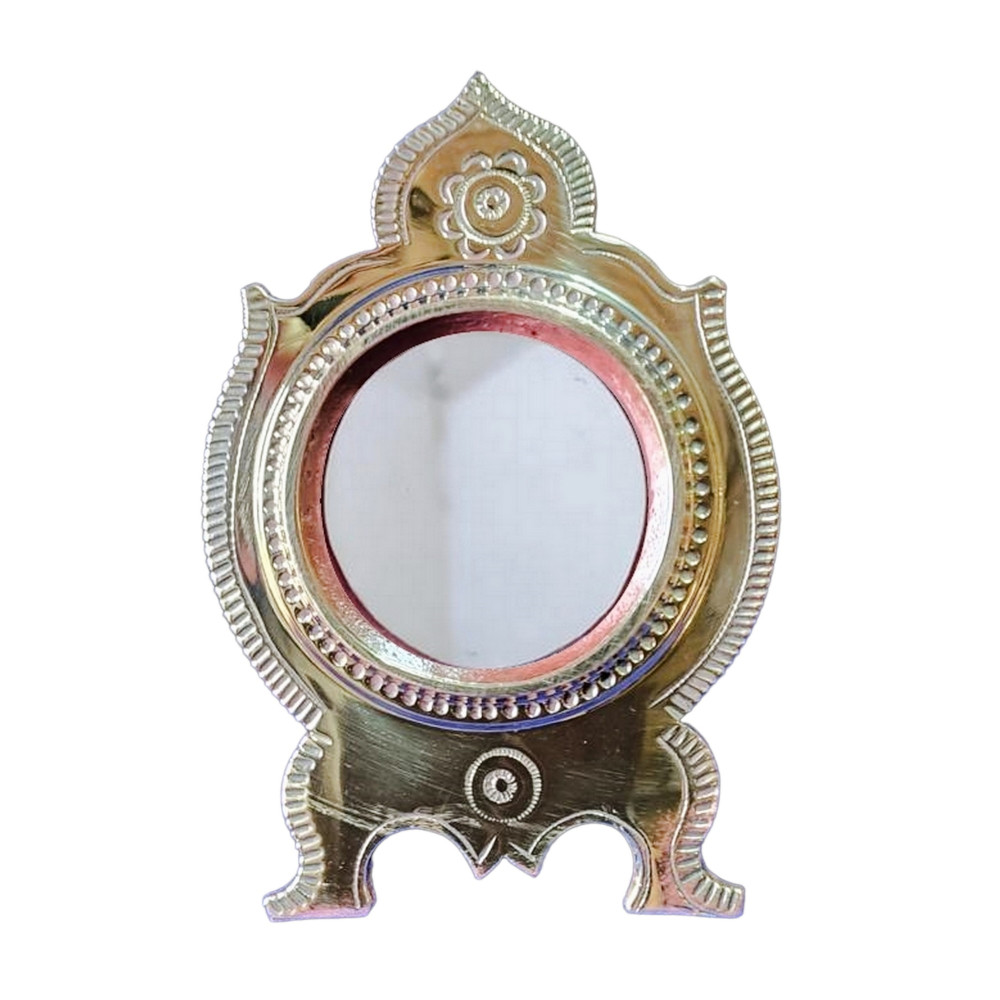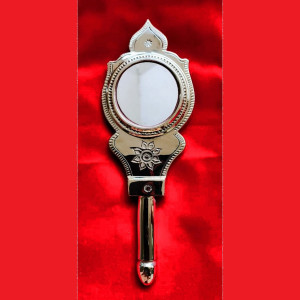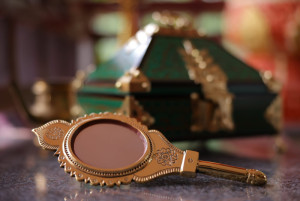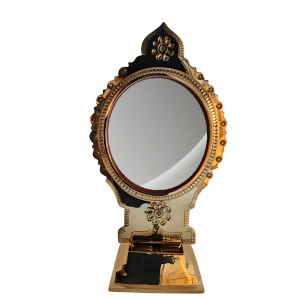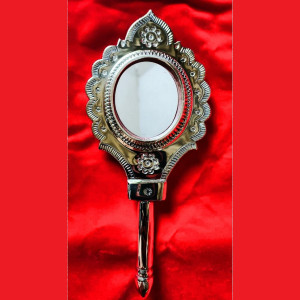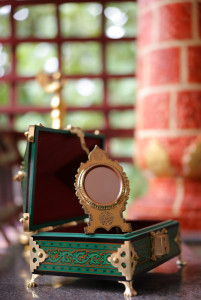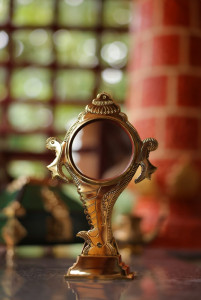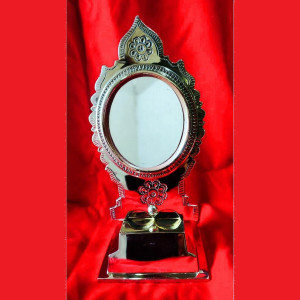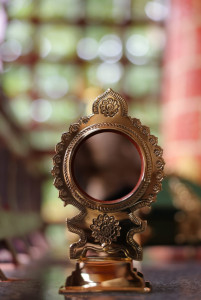Aranmula Kannadi AKK13
This particular type of Aranmula Kannadi offers a larger reflective surface, often designed to have a free-standing base or a stand, allowing it to be placed in homes or spaces for both functional use and aesthetic appeal.
This standing mirror design, much like other forms of Aranmula Kannadi, carries the same cultural and symbolic significance. It's considered auspicious and is often used in ceremonies, rituals, and special occasions.
Care instructions
Wipe clean with a soft, dry cloth. Do not use abrastive cleaning chemicals.
- Primary Material : Copper and Tin
- Glass Mirror Dimension : 5.0 cms
- Total Dimension(incl. Frame) : 20 cms (length), 10 cms (width)
- Thickness : 2 cms
- Overall Weight : 700 gms
- Mount Type : Standing Mirror
- Approved Use : Home & Beauty
- Mirror Shape : Oval
Aranmula Kannadi, a unique handmade metal alloy mirror, originates from the village of Aranmula in the state of Kerala, India. It's not just a mirror but also a symbol of cultural heritage and craftsmanship. The name "Aranmula Kannadi" is derived from the place of its origin (Aranmula) and "Kannadi," which means mirror in the Malayalam language.
History:
The history of Aranmula Kannadi dates back several centuries and is shrouded in legend. It's believed that the technique of making these mirrors was passed down through generations and has been kept as a closely guarded secret within specific families in Aranmula. The making of these mirrors was traditionally associated with the Aranmula Parthasarathy Temple. Mysterious in its beauty, the metal mirror is believed to bring prosperity to your home. Aranmula Kannadi is a wonder to the world because of its specialty. A 45 cm tall Aranmula Kannadi is preserved in British Museum located at London, UK. Geological indication has taken the potency of Aranmula kannadi
Unique Features:
Non-reflective Coating: Unlike conventional mirrors that use a reflective coating, Aranmula Kannadi's reflection is due to the nature of the metal surface and the way it's polished. The uniqueness of mirror lies in the fact that it is not made of glass. The exact metals used in the alloy are mixed with copper and tin before being polished for several days in a row to achieve their reflective surface. In a normal mirror, the image is formed from the inner surface. However, in Aranmula Kannadi, light can get reflected from the outer surface (i.e., from polished metal surface) which gives a perfect image. The mirror is usually kept in room temperature away from direct heat and dust.
These mirrors received a geographical indication (GI) tag in 2004-05.

 INR
INR USD - $
USD - $
 CAD - Can$
CAD - Can$
 EUR - €
EUR - €
 GBP - £
GBP - £
 SGD - S$
SGD - S$
 AUD - A$
AUD - A$
 MYR - (RM)
MYR - (RM)
